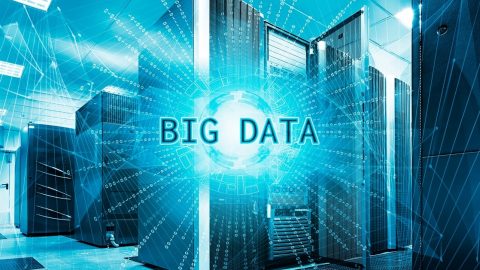Big Data is an enormously powerful tool. Like every tool, it can be used in different ways. A hammer can drive a nail into a wall (useful) or crack a skull (very bad). The challenge is to establish points of orientation and draw effective lines. This is probably the shortest summary of our Investment Board with our research partners.
The digitisation of more and more extensive areas of life has produced an exponential growth in data over the past decades. Modern algorithms have made them useful. The resulting opportunities are sizeable. In healthcare, for example, it has been possible to predict epidemics for a while; now it is possible to predict complications for very premature babies thanks to collected data prior to their occurrence and thus to increase their chance of survival drastically.
The use of such critical information such as biological data becomes problematic once they do not serve their primary uses anymore (i.e. in this case, therapeutic progress), but are used in completely other, potentially opposed fields with new links and algorithms. The mobility patterns of mobile phones can be used to improve the network or to turn the user into a transparent person and sell the findings, as has happened in the USA.
This leads to two fundamental requirements: the sensitisation of the individual; and the possibility to control how, where, and by whom data are collected and processed, and the transparency of the algorithms that are being employed. Without these two elements, there is an imbalance which annuls any effort to impose a corrective on the use of data. If the information used and the way it is correlated are unknown, an informed appeal against the resulting, possibly false or discriminatory decisions is impossible.
Regulatory frameworks such as the GDPR (General Data Protection Regulation) or the imminent e-privacy regulation by the EU are important steps towards a balanced practice. At the same time, there are still 50 countries that have no data protection laws at all. In the worst case, the government itself uses information for surveillance or discriminatory purposes against certain demographic groups: in China, the Uyghur minority has to install surveillance software on their mobile phones and car trackers. The social scoring, currently in beta phase in two provinces, is to be rolled out across all of China and will severely curtail citizens with bad ratings in their options.
Of course, Big Data applications do not only abet such dystopian scenarios, but they also serve the public good. The United Nations have created suitable Big Data solutions for each of their 17 goals for sustainable development. Smart Cities are an example. Higher levels of interconnectedness in traffic and energy systems can produce enormous efficiency gains and lead to a decrease in energy consumption and pollution. In South Africa, the citizens of Cape Town can monitor water consumption and the required savings in their district online and in real time. This has contributed significantly to mitigating the water crisis that has burdened the Western Cape province since 2015.
The possibility to employ resources in the industrial or agricultural sector more efficiently on the basis of algorithms facilitates efficiency gains that, from a sustainability perspective, are indispensable. However, if the data and algorithms are not publicly accessible, this can easily lead to a rising degree of market concentration due to the crowding-out of smaller competitors and to higher barriers to entry for new competitors.
Due to this economic relevance in particular, our research partners point out that we are in dire need of best-in-class approaches as to how to handle the collected data. Companies limit their efforts to complying with existing law or just react to external pressure from customers or investors. At the same time, the analysts of our partners are strongly advising against being content with the expression of unilateral commitments. The issue is simply too important. This results in a clear responsibility not only of sustainable investors such as EAM, but also of every individual to argue in favour of the responsible use of their data.
Legal note:
Prognoses are no reliable indicator for future performance.
Legal disclaimer
This document is an advertisement. Unless indicated otherwise, source: Erste Asset Management GmbH. The language of communication of the sales offices is German and the languages of communication of the Management Company also include English.
The prospectus for UCITS funds (including any amendments) is prepared and published in accordance with the provisions of the InvFG 2011 as amended. Information for Investors pursuant to § 21 AIFMG is prepared for the alternative investment funds (AIF) administered by Erste Asset Management GmbH pursuant to the provisions of the AIFMG in conjunction with the InvFG 2011.
The currently valid versions of the prospectus, the Information for Investors pursuant to § 21 AIFMG, and the key information document can be found on the website www.erste-am.com under “Mandatory publications” and can be obtained free of charge by interested investors at the offices of the Management Company and at the offices of the depositary bank. The exact date of the most recent publication of the prospectus, the languages in which the fund prospectus or the Information for Investors pursuant to Art 21 AIFMG and the key information document are available, and any other locations where the documents can be obtained are indicated on the website www.erste-am.com. A summary of the investor rights is available in German and English on the website www.erste-am.com/investor-rights and can also be obtained from the Management Company.
The Management Company can decide to suspend the provisions it has taken for the sale of unit certificates in other countries in accordance with the regulatory requirements.
Note: You are about to purchase a product that may be difficult to understand. We recommend that you read the indicated fund documents before making an investment decision. In addition to the locations listed above, you can obtain these documents free of charge at the offices of the referring Sparkassen bank and the offices of Erste Bank der oesterreichischen Sparkassen AG. You can also access these documents electronically at www.erste-am.com.
Our analyses and conclusions are general in nature and do not take into account the individual characteristics of our investors in terms of earnings, taxation, experience and knowledge, investment objective, financial position, capacity for loss, and risk tolerance. Past performance is not a reliable indicator of the future performance of a fund.
Please note: Investments in securities entail risks in addition to the opportunities presented here. The value of units and their earnings can rise and fall. Changes in exchange rates can also have a positive or negative effect on the value of an investment. For this reason, you may receive less than your originally invested amount when you redeem your units. Persons who are interested in purchasing units in investment funds are advised to read the current fund prospectus(es) and the Information for Investors pursuant to § 21 AIFMG, especially the risk notices they contain, before making an investment decision. If the fund currency is different than the investor’s home currency, changes in the relevant exchange rate can positively or negatively influence the value of the investment and the amount of the costs associated with the fund in the home currency.
We are not permitted to directly or indirectly offer, sell, transfer, or deliver this financial product to natural or legal persons whose place of residence or domicile is located in a country where this is legally prohibited. In this case, we may not provide any product information, either.
Please consult the corresponding information in the fund prospectus and the Information for Investors pursuant to § 21 AIFMG for restrictions on the sale of the fund to American or Russian citizens.
It is expressly noted that this communication does not provide any investment recommendations, but only expresses our current market assessment. Thus, this communication is not a substitute for investment advice.
This document does not represent a sales activity of the Management Company and therefore may not be construed as an offer for the purchase or sale of financial or investment instruments.
Erste Asset Management GmbH is affiliated with the Erste Bank and austrian Sparkassen banks.
Please also read the “Information about us and our securities services” published by your bank.

